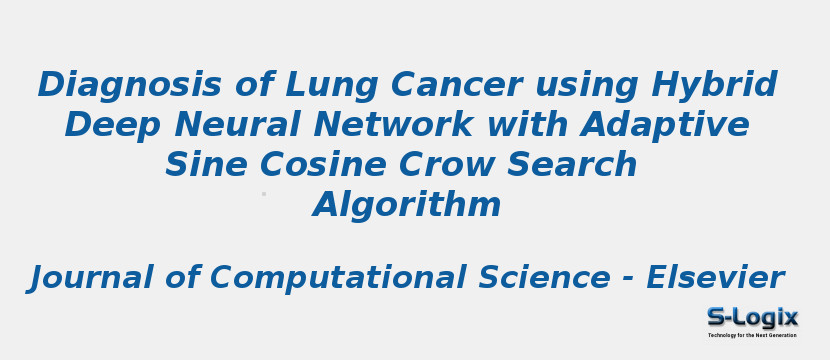Research Area: Metaheuristic Computing
Lung cancer is a leading cause of cancer related deaths in all around the world. The identification of lung nodules is the significant step in the diagnosis of earlier lung cancer which can develop into a tumor. In the lung disease analysis, valuable information is provided by the Computed Tomography (CT) scan. The key objective is to find the malignant lung nodules and categorize the lung cancer whether it is benign or malignant. In this paper, propose a diagnosis of lung cancer using hybrid deep neural network with adaptive optimization algorithm. Initially, the preprocessing stage is performed using the fast non local means (FNLM) filter. For the segmentation process, the Masi entropy based multilevel thresholding using salp swarm algorithm (MasiEMT-SSA) is used to segment the cancer nodule from the lung images. Using the grey-level run length matrix (GLRLM), different features are mined in the feature extraction. The binary grasshopper optimization algorithm (BGOA) is applied to select the optimum features for the feature selection (FS) process. Then the selected features are classified using the hybrid classifier named as deep neural network with adaptive sine cosine crow search(DNN-ASCCS) algorithm. The proposed hybrid classifier accurately detects the lung cancer. The proposed (DNN-ASCCS) is implemented by MATLAB using the Lung Image Database Consortium and Image Database Resource Initiative (LIDC-IDRI) datasets. The different performance metrics are evaluated and related to the existing classifiers and different state-of-art approaches. The simulation outcomes verified that the developed scheme is achieved a high classification accuracy (99.17 %) compared to other approaches.
Keywords:
Lung cancer
lung nodules
significant diagnosis
Computed Tomography
segmentation process
deep neural network
Author(s) Name: Surendar P., Ponni Bala M.
Journal name: Journal of Computational Science
Conferrence name:
Publisher name: Elsevier
DOI: https://doi.org/10.1016/j.jocs.2021.101374
Volume Information: Volume 53
